-
Posts
421 -
Joined
-
Last visited
Content Type
Profiles
Forums
Articles
Gallery
Downloads
Events
Posts posted by Purple Bullet
-
-
BGD - You're right, but sometimes leather is not the best material for the job. I can do leather, but I don't get the enjoyment that I do in heating steel and bending it to my will. Heating thermoplastic and bending it to my will isn't as fun either, but it's closer <grin>.
BTW gmbobnick, that IS nice work. Don't get me wrong, leather is best when you want to get fancy. I've been thinking about trying a blacksmiths blade but I'll likely use kydex for the sheath just because its quicker for me to make secure. I lost a cable Damascus knife with an antler handle from a leather sheath when I did a low-speed tumble off my Yamaha Super Tenere. If it had been kydex I believe I'd still have it.
-
21 hours ago, ranstang94 said:
Leatherwork is my bane,Try Kydex. I saw some video on making sheaths with a press. It works. You don't have to worry about a welt or a snap. Friction will hold the blade until you pull it out. If you mess up the forming you can always reheat and try again. Getting wet won't hurt it, either. Most use Chicago screws to secure, but that requires a wider "seam" than I like. I drill holes after the sheath is formed to the blade and use monofilament fishing line to sew it together. I just make sure to keep it well away from the area that covers the blade so that you don't need a welt.
I first made one for my "fishing equipment" knife but forgot to take a picture before giving it to my pastor. Leather is not the best choice for a knife that may be soaked in fish juice. After seeing how well it worked I made this for my every day carry from the scraps. Not fancy, but it works well so far.
-
Between fighting off the post-covid blahs and working on yard toys for my grandchildren I haven't been doing much in the forge. To day a relative gave me a heads-up that a rental place was selling out (after a lot of Hurricane Ida damage) so I dropped by to see what I could pick up. I hope that straight peen isn't the one John is missing. Old O2 bottles are destined for gongs. I already had a letter stamp kit, but this one is larger.
While I was out I decided that waiting for right and left lay cable to be found as scrap might take a while, so I went to Paducah Rigging and bought 10 ft each of 7/8" left and right lay cable. Should be enough for a plethora or two of cable feather Damascus blades
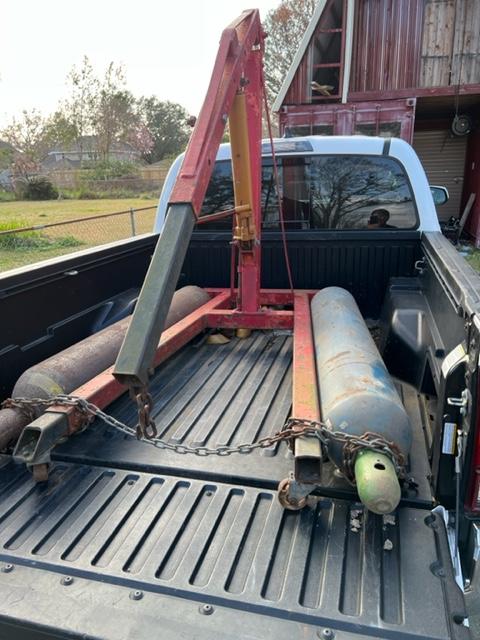
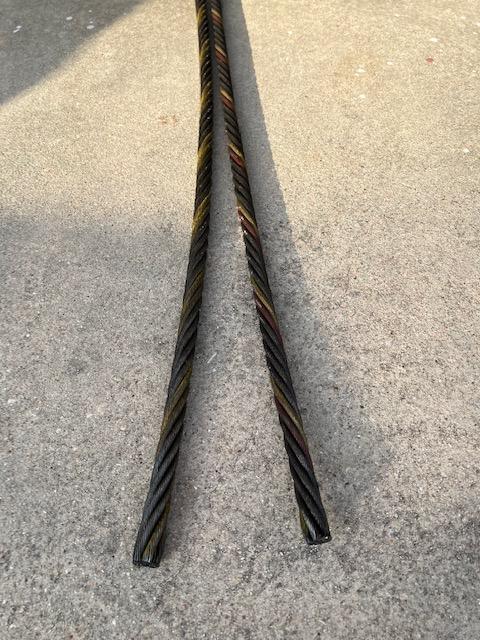
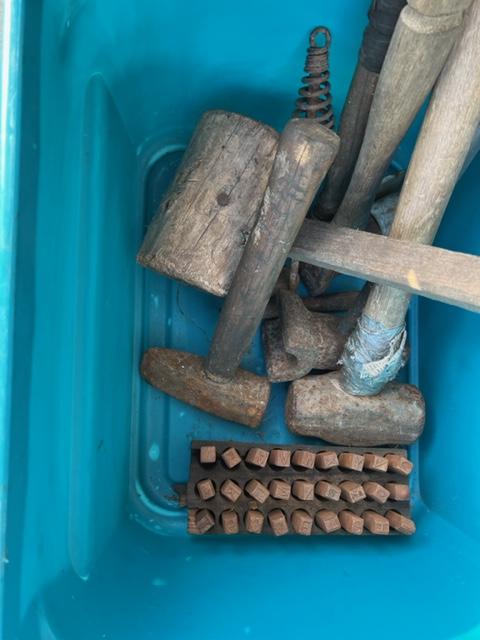
-
Iron Dragon, I think you're on to something. It might be a potters vat, used to convert slip back into clay by absorbing water from it. If that is the case, it is largely plaster of paris.
-
It depends on what you want of a weld. If shipping containers are cor-ten, I weld on that all the time. The bottom floor of my shop is shipping containers with some interior sections cut out with a plasma torch. Sometimes I use MIG sometimes flux core. I haven't had anything drop off yet. I just today welded a bracket to hold an aluminum box above my lathe to be a machine tools cabinet.
-
John is right. This used to be THE tool for copper tubing connections before compression nuts and shark bite connectors. I had to buy a set for making coils for my induction forge. I'm assuming that fewer physical breaks are better for electrical connections which is more important in induction coils than leakage of coolant.
BTW - If you get one of those China induction forges don't do what I did. I looked at it and figured it was a copper cooling system. In South Louisiana's hot, humid clime I needed something to keep algae growth down in my recirculating cooling water system. From my experience in corrosion control I knew that copper sulfate in water would protect copper AND kill algae. What I did not know until recently is that there is an aluminum heat sink inside that the coolant runs through. Aluminum is anodic to copper, so now I have a leak to repair AND I'll have to flush the system and find something friendlier to aluminum to kill algae.
-
Daswulf - I actually tried that as well. I managed to weld a fish hook into a flat section of 1060 steel using induction. The induction would heat the bar which would heat the hook. But I couldn't do it twice in a way that looked good. I even considered heating an almost finished blade, pounding a fish hook into it, then filling the resulting groove with brazing. It didn't look all that great and it wasn't what I promised. It might be worth exploring more, though. I think I would just dremel the design into it. My pastor might have even been happier with that, but I'm stubborn. My stubbornness compensates for my lack of skill, so that's just the way it is.
JHCC - Thanks. I can hardly wait to see some of your C&R. The little bit I did has whetted my appetite for it, but I have too many projects lined up. My 50th anniversary was in December and I promised my wife a chest to store her quilts. I also have some yard toys to build and I need to work on an idea I have for a press.
-
I finally ran out of ways to fail at fish hook damascus! In a way this is a follow up to the Can You Make Damascus with an Induction Forge? Thread I tried at least three times to make a fish hook Damascus knife for my pastor. I'm only a month and a half late for his birthday. He is an avid fisherman and has written many articles for the Louisiana Conservationist and Louisiana Sportsman magazines.
My induction forge heats fast, but cannister really needs to soak. I ended up using my coal AND induction forges. Coal is good for soaking, but heat is uneven and hard to watch. I used coal to bring up to close to welding and used induction to even out and raise the temp up TO welding heat. I repeated this about five times before I ever started to strike.
Another mistake was having too good a release agent. The white paint did a great job of not sticking to the billet, but the cannister would fall apart and the billet fall out before it was well consolidated. When I tried to get the billet hot enough to weld outside of the cannister it crumbled under the hammer. I thought it was "red short" but no, it just wasn't together. Like Frazer said - cow pies.
This time I cleaned the hooks in acetone, then soaked them in diesel. Put the cannister together and packed the 1084 powder HARD with a large C clamp. Soaked in coal fire/ induction repeatedly and mashed it good with my 50# LG. Cannister welded to the billet and held while I repeated the process several times. I still ended up with some cracks but I had enough to make the blade.
I keeping with the fishing gear theme, I split a Styrofoam fish float and carved it down to give some width to the handles, epoxied them on, then wrapped 30# Cajun monofilament line mixed with epoxy. The epoxy has a long pot life and is supposed to be UV resistant. Before heat treating I brazed the guard (made from brazing two lengths of 1/4" brazing rod together) and the end cap on. I did an edge quench and tempered at 425 for 90 min.
I debated with myself about whether to make the wraps neat and even or random. Semi random won out as I feel it will result in a better grip when slimy with fish guts. Etched with home made ferric chloride, followed up with Community French Roast coffee.
I won't say I'll never make another fish hook Damascus, but I'd have to have a LOT of incentive to tackle it again with the gear I now have.
-
Abnormal, strange, not like everyone else, I've been described as such, and gladly received! In my mind, perversion is using something created for one purpose for a different, destructive or self-harmful purpose. Using a screwdriver for a crowbar for instance.
-
Whew! I'm just glad there is no perversion involved! Of course, I haven't checked societal norms since yesterday...
-
Why in a closet?
-
Thomas - may your retirement be long and prosperous. About the only thing I really miss in retirement is some of the people I worked with, especially the ones in my dixieland band. We had a banjo, guitar, alto sax, sax, sometimes a trumpet and drummer and me on the trombone. We would practice once a week in an unused meeting room at lunch and occasionally play birthday parties or busk at a downtown park in New Orleans. Once we even busked at the Quarter. However, I have changed careers a few times and I find that it is best to break clean. The future is too interesting to let it get burdened down by the past.
-
Back when I was a dive-tender, one of the most favored devices for sharpening was a ceramic well choke. A tender (as well as a diver) had to have a sharp knife. The tender also had to have a ten inch crescent wrench for attaching hose to helmet and volume tank as well as #10 GIC whips to the compressor and oxygen bottles to manifolds of chambers. If you kept your chromed crescent shiny, it would put as good an edge on the cheap stainless knives we used as anything else. Just use it like a hone.
Divers always had the sharpest knives - electricians the dullest. Just a general observation, I'm sure there were exceptions either way.
-
All we have here are black widows, brown recluse, moccasins, rarely nowadays, a cane rattler, oh, and alligators. When I was working as a chem e for a major oil company, we had a lot of expatriates and other non-locals. I put together a presentation for them. At around two am the night before I was awakened by my three legged Catahoula hound barking. He and a five foot alligator were in a standoff. It still isn't legal to kill a 'gator here unless you have the tags for it, so I called the police. He took one look and said "I ain't touching that. What do you want to do?" So I made a pole snare out of a piece of plastic pipe and baling wire, hooked him by the head and tossed him in my truck. The cop said to follow him and I did to a remote area near Lake Pontchartrain where I released the 'gator. He was amazed I handled it so easily. I told him that wrestling alligators before breakfast was par for the course when you do offshore chemical engineering support!
What really shook me was what I found in Houston. We had a vacant lot two exits north of the major interstate intersection of downtown Houston. I had to go cut the grass once a month and once I saw something colorful writhing in the grass where I made my last pass. It was a coral snake. He had apparently picked up his head while the mower was passing over. It was definitely "red touching yellow". We used to live there when I was a toddler and as a kid I spent days exploring the banks of the Little Oak Bayou that ran next to it. I never knew there were coral snakes there.
-
JHCC - That is cool. I'm going to have to get one of those. The method I found just used regular dividers https://crayolateachers.ca/framework/uploads/2018/01/DividingCircleFive.pdf but I found it only got me close. I had to adjust it to make it come out. Might just be lack of precision on my part.
Frosty - Confession time: After I posted, I started feeling guilty, did a search and found your method from about two years ago. This morning I'm going to start scrubbing down my clutch with diesel.
Les - I have a long way to go to approach any of your work. I appreciate the pointers.
BB - I know the feeling. I just got over two weeks of the gunk. Might have been Covid, I don't know and I don't care as long as it is in the rear view mirror. Get well soon, Jason.
-
Thanks Daswulf. My every day carry is the first cable knife I made. It worked out that the blade edge and point were well consolidated, but back up near the spine I have a few incomplete welds. It doesn't really affect the strength, but really makes it apparent that it WAS a piece of cable. Etching doesn't work too well on this knife.
For my next cable knife (when I get a round to it) I need to find some left lay cable the same size as the right lay cable I've got. Consolidate them individually then weld them together for cable-feather Damascus.
-
What I did in the shop today. My first rose from a scratch pattern I made. I thought I remembered my high school geometry, but I had to look up how to make a circle evenly divided by 5. I can't believe I spent so much time on the rose and forgot to give the leaf some "life".
Les gave me some tips on using copper sulfate to color them. The metal for the petals was harvested from old broken folding chairs.
-
So when it gets cold, what do you lube your LG with? Mine wants to keep hammering when I'm done when the temp drops. I'm using 30 W chain and bar oil.
-
Pushing 40 deg F here in LaPlace. Once it got so cold here that I took my family for a stroll on Lake Pontchartrain. We took pictures but I can't find them right now. What was scary was that I thought the area we were walking was only about knee deep. Later I found it about 5 ft!
Going below freezing is an event down here. One thing for sure, we don't know how to handle ice on the roads. I gather its a lot like driving on a wet, hard clay road. You kind of do it sideways.
-
JHCC - Impressive video and an awesome vise.
BGD - Yeah, what I was thinking probably wouldn't be very practical. You would need some kind of slip/catch for large adjustment to size with the ram only for the last part. If I didn't already have a good post vise and I had one with a busted box/screw I might try it.
-
Makes me wonder... anyone ever try to replace the screw with hydraulics? I'm thinking manual hydraulics like a jack or port-a-power.
-
Wouldn't a fast-travel acme threaded rod and flange nut work?. My first post vise was made from a large threaded rebar with a convex faced nut. (Surplus from a diving job repairing a dam) and a section of 2" plate for jaws. Various parts of a cut up truck frame for legs. It was monstrous, but it worked. I need to try to find that thing and take a picture of it. It was from at least 30 years ago, but it might still be in the bottom of my old scrap pile.
-
Really nice anvil! Oh, and we won't tell your spouse you are dating online.

-
...or conversely, just MHOsey on along.

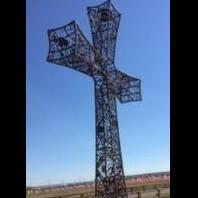
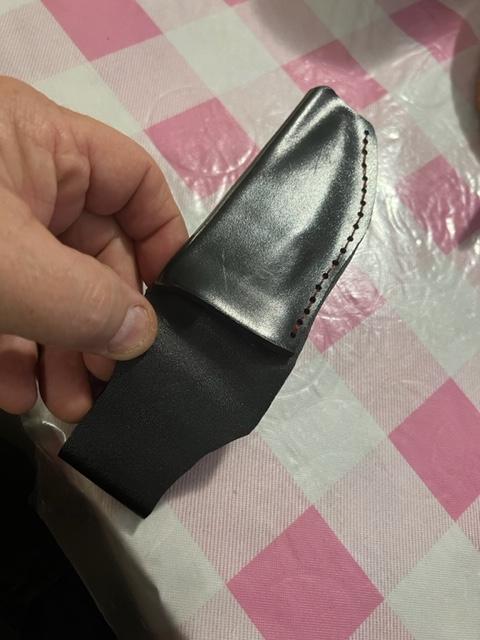




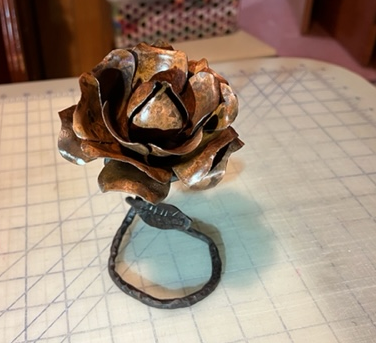


Fill Your Tank Up
in Everything Else
Posted
As a youngster paddling my pirogue out through the swamps and "plarie" (local term for the marsh down Bayou Lafourche) snakes were common, but moccasins DID command special attention. I used a paddle to encourage one to leave my pirogue, but then made the mistake of trying to further discourage him with the paddle while he was in the water. Instead of hitting with the edge, I hit with the flat. The paddle immediately disassociated into three separate pieces and the snake was not perturbed at all. I had to get to shore with the remaining handle and cut a sapling to pole home.